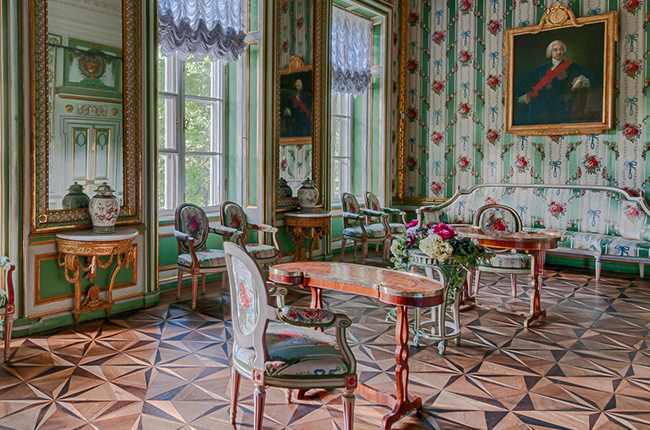The pearl of Europe: Palace interiors of Kuskovo estate


Vadim Razumov and RBTH have embarked on a series of photo journeys visiting Russian estates. First up is Kuskovo Palace, which represents a uniquely preserved monument of 18th-century Russian culture.
Vadim Razumov
Count Pyotr Sheremetyev, a member of Russia’s richest family in Catherine the Great’s time, built Kuskovo in the mid-18th century (1769-1775).
Vadim Razumov
The main architecture was Karl Blank. The construction involved foreign artists, sculptors, carvers and the count’s serfs.
Vadim Razumov
The palace was the principal building of Count Sheremetyev’s estate. It was created to receive European emperors and kings in the summer.
Vadim Razumov
Balls and many other functions were held here.
Vadim Razumov
During huge celebrations Kuskovo welcomed up to 30 thousand guests.
Vadim Razumov
With its sweeping, sphinx-flanked stairs leading to stately rooms decorated with Flemish tapestries, crimson silk, rock crystal chandeliers and gold-wreathed mirrors, it is sometimes called Moscow’s Versailles.
Vadim Razumov
It is no exaggeration to say that the preservation is unique, given that the palace was built of wood.
Vadim Razumov
Much has been preserved to this day: the park grounds, its sculptures and pavilions, and, of course, the pièce de résistance — the palace.
Vadim Razumov
In the period 1976-1983 the palace was completely renovated. The decorative features were restored according to the original plans dating back to the 1780s and 90s.
Vadim Razumov
Fabric from the walls and furniture was recreated after it was lost in the 19th century.
Vadim Razumov
Kuskovo was first mentioned as the estate of Count Sheremetyev in the late 16th century. During 1623-1624, there was a wooden church, a boyar court and serfs’ quarters. Kuskovo remained the Sheremetyev family estate for more than 300 years until 1917. For more information and summer views of the estate, watch our video.
Vadim RazumovSubscribe
to our newsletter!
Get the week's best stories straight to your inbox